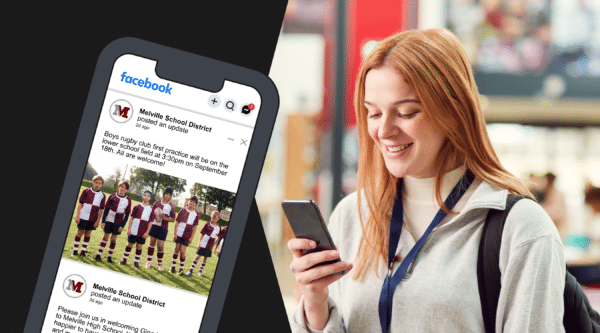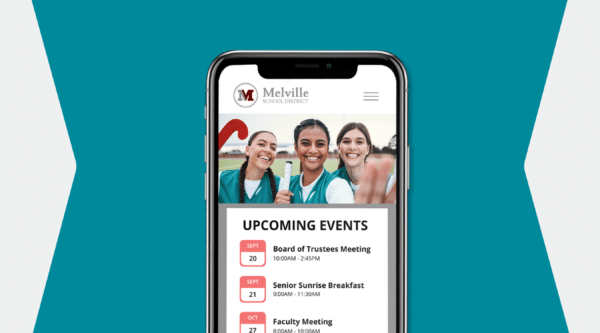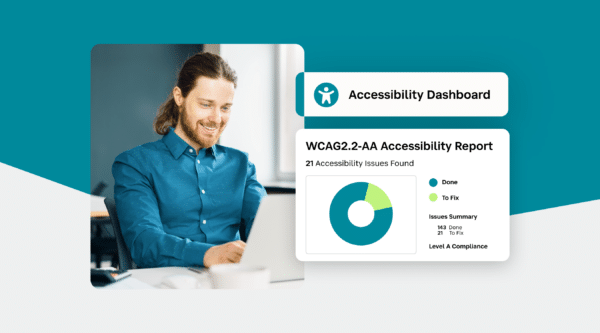

Effective communication is key to a successful school or district. With the growing number of digital tools available, it can be challenging to determine the best communication channels to reach families, staff, students, and the community. As technology evolves, schools need streamlined, efficient communication strategies to keep up. The right digital tools ensure your messages are delivered quickly and received by the right audience.
In this post, we’ll break down six essential digital communication channels every school should leverage to improve family engagement and enhance information sharing.
Why Digital Communication Matters
In today’s world, schools manage a wide range of information, from academic achievements to emergency alerts. Whether promoting events or informing families of closures, knowing the best channel for each message is critical. A well-rounded communication plan that incorporates a mix of digital tools is key to ensuring your audience receives your message in the most efficient way.
Let’s explore the six key communication channels your school can use to maximize outreach and ensure clear, consistent messaging.
1. Email
Email is one of the most effective and widely-used communication tools for schools. It’s direct, personal, and ideal for sharing detailed information such as newsletters, policy updates, and event reminders. Families appreciate the ability to read emails on their own schedule, making it a versatile tool.
Best Practices for Email:
- Use email for in-depth communication, such as newsletters, important forms, or event registration details.
- Include links to your school website for more information, allowing families to click through for additional context.
- Avoid overwhelming families with too many emails; instead, focus on important updates to maintain high engagement.
Pro Tip: For better email engagement, consider tools that track open rates and audience interactions, like Smore.
2. Text and Voice Notifications
For urgent or time-sensitive communication, text and voice notifications are indispensable. Whether notifying families of a school closure or an important event, these channels ensure immediate delivery and reception.
Key Considerations:
- Use text messaging sparingly to avoid notification fatigue.
- Reserve this channel for critical updates, such as emergencies or last-minute schedule changes.
- Give families the option to customize their notifications, choosing between text, voice, or both.
Pro Tip: Platforms like SchoolStatus Connect provide reliable text and voice messaging options for schools, ensuring families receive urgent information quickly.
3. Mobile App
In a mobile-first world, having a dedicated school app is no longer a luxury—it’s essential. Apps provide a centralized platform for school calendars, notifications, lunch menus, and more. Push notifications within the app allow for urgent updates, while also segmenting messages for specific groups, such as sending alerts only to high school families.
Best Practices for Mobile Apps:
- Ensure easy access to important features like directories, calendars, and school news from within the app.
- Integrate your school’s website and communication tools into the app for a seamless experience.
- Use push notifications sparingly for urgent updates only.
3. Video
Video is one of the most engaging formats for communication. Whether it’s a message from the superintendent, a recap of a recent event, or instructional content for families, video provides a dynamic way to connect with your community.
Popular Uses for Video:
- Live streaming events such as school board meetings, sports games, or performances.
- Posting weekly updates from school leadership.
- Creating instructional videos, such as how to use new online learning tools or access the parent portal.
Pro Tip: Hosting videos on platforms like YouTube allows for easy sharing and embedding on your school’s website and social media channels, broadening your reach.
5. Social Media
With many families engaging on platforms like Facebook, Instagram, and Twitter, social media is a powerful tool for schools. These platforms allow for quick updates, community-building, and celebrating school achievements.
Best Practices for Social Media:
- Use Facebook and Instagram to share event updates, achievements, and photo galleries.
- Link social media posts back to your school website for further details.
- Maintain consistent messaging across all platforms to reinforce your school’s brand.
Pro Tip: Tools like Hootsuite or Buffer can help you manage multiple social media accounts, schedule posts, and track engagement.
6. School Website
Your school website is the foundation of your digital presence. It acts as a hub where families, students, and staff can find all necessary information, from event calendars and announcements to resources and policies.
The key to having a successful website that supports all other communication is that it is easy to use and shows all updates of communication that is being shared. For example, if you are promoting a big event, you should have it featured as a news announcement, homepage banner and even a calendar event. Depending on the degree of your CMS integration, it may automatically update, or you may have to update the website manually.
Key Features of an Effective School Website:
- Regularly update the website to reflect the latest news, resources, and upcoming events.
- Ensure the website is mobile-friendly so families can access it on any device.
- Use it as the primary location for newsletters, announcements, and event details.
Balancing Digital and Non-Digital Communications
While digital communication is essential, it’s important to remember that some community members may not have reliable access to smartphones or the internet. Traditional methods, such as printed newsletters or flyers, still hold value and should complement your digital efforts.
Be sure to cross-promote your digital channels in non-digital materials, such as including, “Follow us on Facebook” or “Download our school app” on printed newsletters. This helps ensure all families, regardless of their preferred communication method, stay informed.
Making the Most of Your Communication Channels
As the communication landscape continues to evolve, schools must adapt to keep up. By utilizing a combination of digital communication channels, schools can ensure messages are delivered clearly, consistently, and in the most engaging manner possible.For more tips on managing school communications or to learn how to simplify your school’s communication strategy, explore tools like SchoolStatus for an all-in-one communication platform that helps manage outreach, engagement, and compliance.
Stay Connected
News, articles, and tips for meeting your district’s goals—delivered to your inbox.





